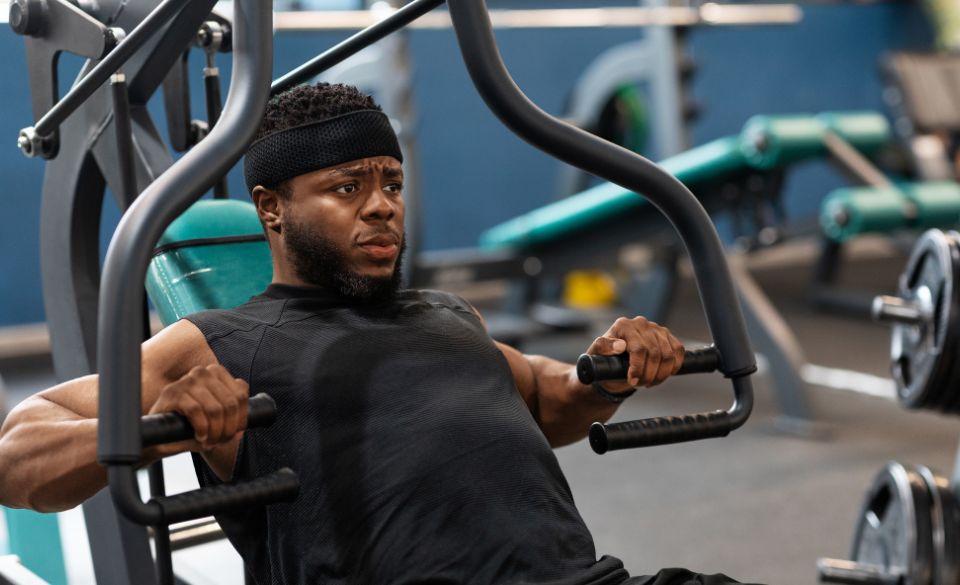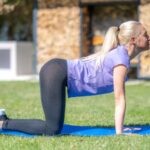
10 Best Chest Workout Exercises for Building Muscle
Page Contents
When it comes to sculpting a well-defined upper body, the chest muscles play a pivotal role. A robust chest not only adds a striking aesthetic to your physique but also contributes to your overall strength and functional fitness. Whether you’re a seasoned gym-goer or a newcomer to the world of fitness, incorporating effective chest workout exercises into your routine can make a substantial difference in your muscle-building journey. In this article, we’ll delve into the science-backed top 10 chest workout exercises that are guaranteed to help you achieve your muscle-building goals.
The Science Behind Chest Development
Before we dive into the exercises themselves, let’s briefly explore the science behind chest muscle development. The chest, or pectoralis major muscle, is composed of two main sections: the clavicular head (upper chest) and the sternal head (lower chest). To stimulate optimal growth, it’s essential to target both sections using a variety of exercises that incorporate different movement patterns and angles.
A study conducted by the American Council on Exercise (ACE) found that compound exercises, which involve multiple joints and muscle groups, elicit higher muscle activation in the chest compared to isolation exercises. This is due to the recruitment of stabilizer muscles and synergistic muscle groups during compound movements. Additionally, incorporating progressive overload – gradually increasing the weight lifted over time – has been shown to be a key factor in promoting muscle growth.
The Top 10 Chest Workout Exercises
1. Bench Press: The classic bench press is a staple in any chest workout routine. Research published in the Journal of Strength and Conditioning Research demonstrates that bench pressing activates both the upper and lower chest muscles, making it a foundational exercise for chest development.
2. Push-Ups: Don’t underestimate the power of the humble push-up. A study published in the Journal of Physical Therapy Science found that push-ups effectively target the pectoralis major while also engaging the core and stabilizing muscles.
3. Incline Dumbbell Press: This exercise specifically targets the upper chest. A study in the European Journal of Sports Science revealed that the incline dumbbell press activates the clavicular head to a greater extent than the flat bench press.
4. Dips: A study published in the Journal of Bodywork and Movement Therapies highlighted the effectiveness of dips in activating the chest muscles. Dips can be performed using parallel bars or even between two sturdy surfaces at home.
5. Chest Flyes: To isolate the chest muscles, chest flyes are a go-to choice. According to a study in the Journal of Applied Biomechanics, chest flyes effectively target the pectoralis major while minimizing involvement of other muscle groups.
6. Dumbbell Pullover: This exercise not only engages the chest but also stretches the ribcage, creating a unique stimulus. A study in the Journal of Physical Therapy Science emphasized the muscle activation achieved during the dumbbell pullover.
7. Cable Crossover: Incorporating cable resistance adds constant tension to the chest muscles. Research in the Journal of Sports Science & Medicine indicated that cable crossovers promote balanced muscle activation.
8. Wide-Grip Push-Ups: By placing your hands wider than shoulder-width during push-ups, you emphasize the chest muscles. A study in the Journal of Human Kinetics demonstrated increased chest muscle activation with this variation.
9. Landmine Press: This lesser-known exercise involves pressing a barbell attached to a landmine unit. The American Council on Exercise (ACE) states that the landmine press is a versatile movement for chest activation.
10. Machine Chest Press: While free weights are popular, machines have their place. A study in the Journal of Strength and Conditioning Research compared the machine chest press to the bench press and found similar muscle activation in both exercises.
The Importance of Variation and Progression
In the journey towards a well-built chest, it’s crucial to understand the significance of variation and progression in your workout routine. Our bodies are remarkable at adapting to stimuli, and this includes exercise. Incorporating a variety of chest exercises not only prevents boredom but also challenges your muscles in different ways. This challenge stimulates growth and helps overcome plateaus.
One study published in the Journal of Sports Sciences highlighted the importance of exercise variation in promoting continuous muscle development. Rotating between different chest exercises not only prevents overuse injuries but also ensures that all areas of the chest receive adequate attention. Remember, your muscles respond best when faced with new challenges, so don’t hesitate to explore different exercises within the ones mentioned earlier.
Furthermore, the principle of progression cannot be overlooked. This principle involves gradually increasing the intensity of your workouts over time. Whether it’s through increasing the weight you lift, the number of reps, or the sets performed, progression ensures that your muscles are constantly pushed to adapt and grow. Research published in the European Journal of Applied Physiology emphasized that progressive overload is a fundamental aspect of muscle hypertrophy.
Tailoring Your Routine: Beginner vs. Advanced
It’s important to recognize that a chest workout routine should be tailored to your fitness level. Beginners should start with a solid foundation of compound movements like the bench press, push-ups, and incline dumbbell press. These exercises not only build strength but also establish neuromuscular connections that are essential for more complex movements.
For intermediate and advanced lifters, adding complexity and variety becomes crucial. Incorporating exercises like dips, cable crossovers, and landmine presses can provide the necessary challenge. Moreover, manipulating variables such as tempo (speed of movement), rest intervals, and training frequency can add an extra dimension to your routine.
Maximizing Results: Nutrition and Recovery
While nailing your chest workout routine is vital, your efforts shouldn’t end there. Nutrition and recovery play equally significant roles in achieving optimal results. Protein intake, for instance, is crucial for muscle repair and growth. Research published in the Journal of the International Society of Sports Nutrition suggests that distributing protein intake evenly throughout the day can maximize muscle protein synthesis.
Equally important is allowing your muscles to recover. Overtraining can lead to fatigue and hinder progress. Ensure you’re getting adequate sleep, as it’s during this time that your body repairs and grows muscle tissue. A study in the journal Sports Medicine highlighted the importance of sleep in muscle recovery and overall performance.
Final Words: Crafting Your Ideal Chest Workout
Building a chiseled chest is both an art and a science. To make the most of your chest workout routine, consider incorporating a mix of compound and isolation exercises that target different parts of the chest. Remember, consistency and progressive overload are key. While these 10 exercises have been scientifically proven to be effective, it’s important to customize your workout routine based on your fitness level and goals. Always prioritize proper form and consult with a fitness professional if needed. With dedication and the right approach, you’ll be well on your way to achieving a powerful and well-defined chest that turns heads at the gym.



